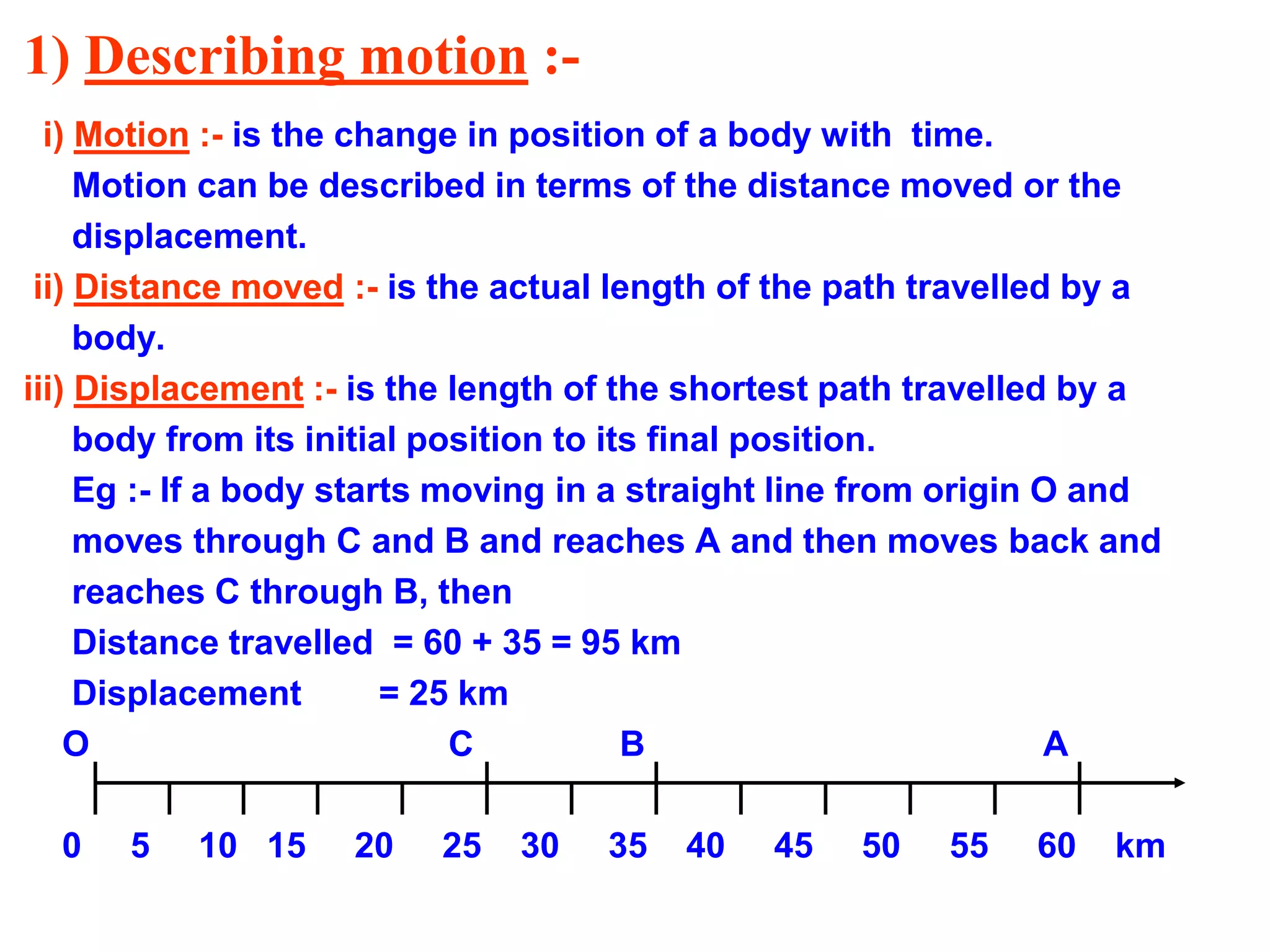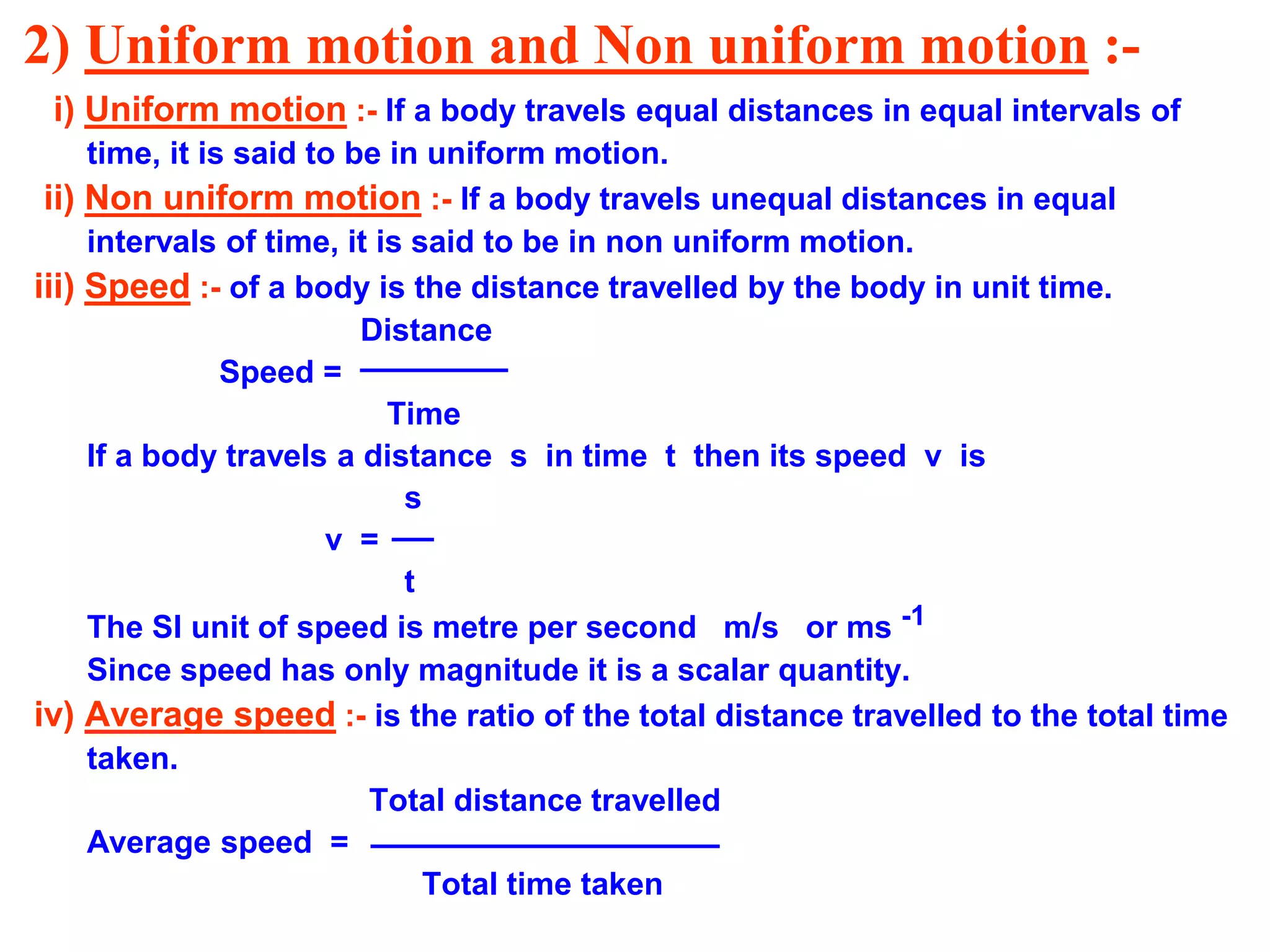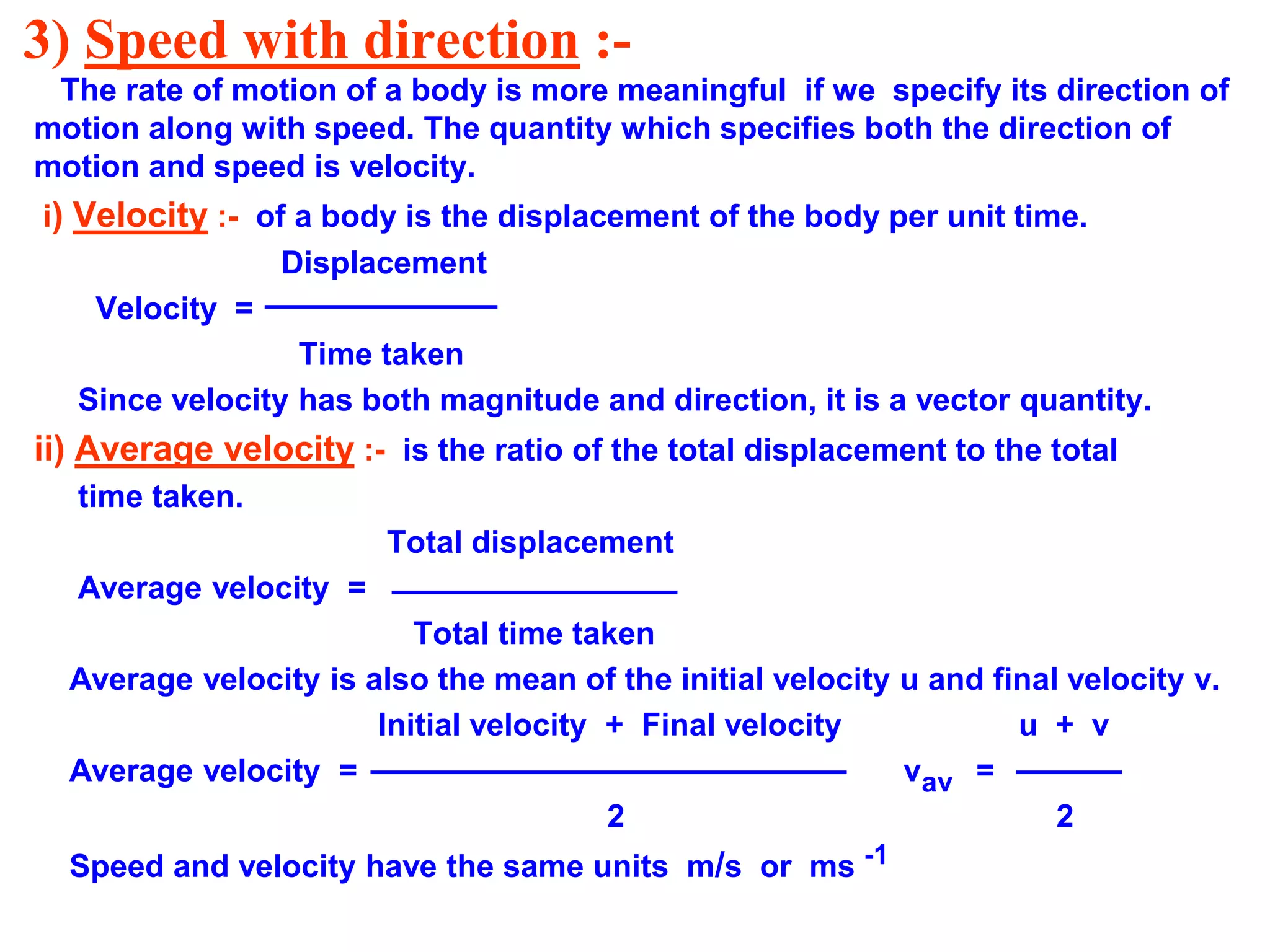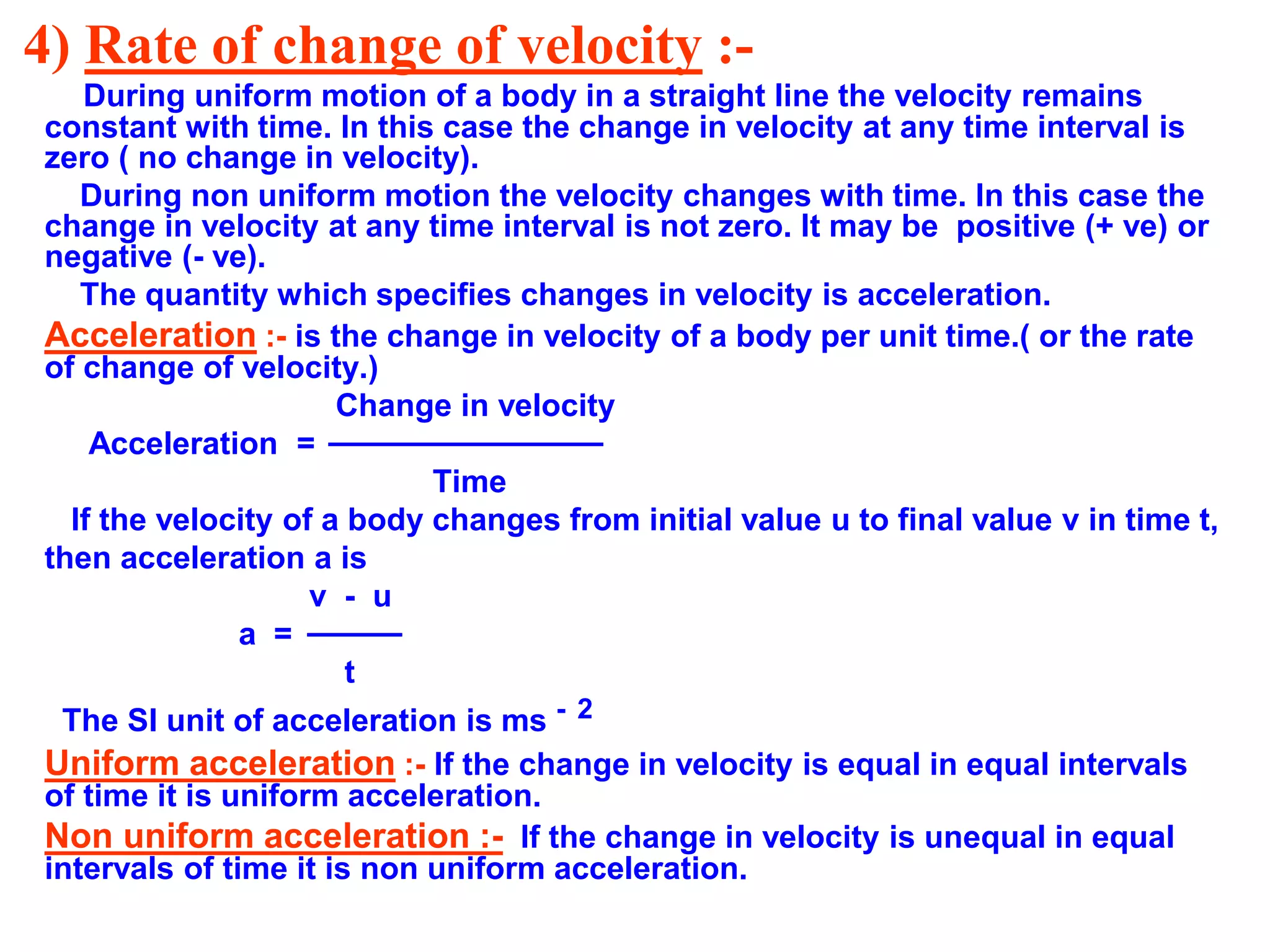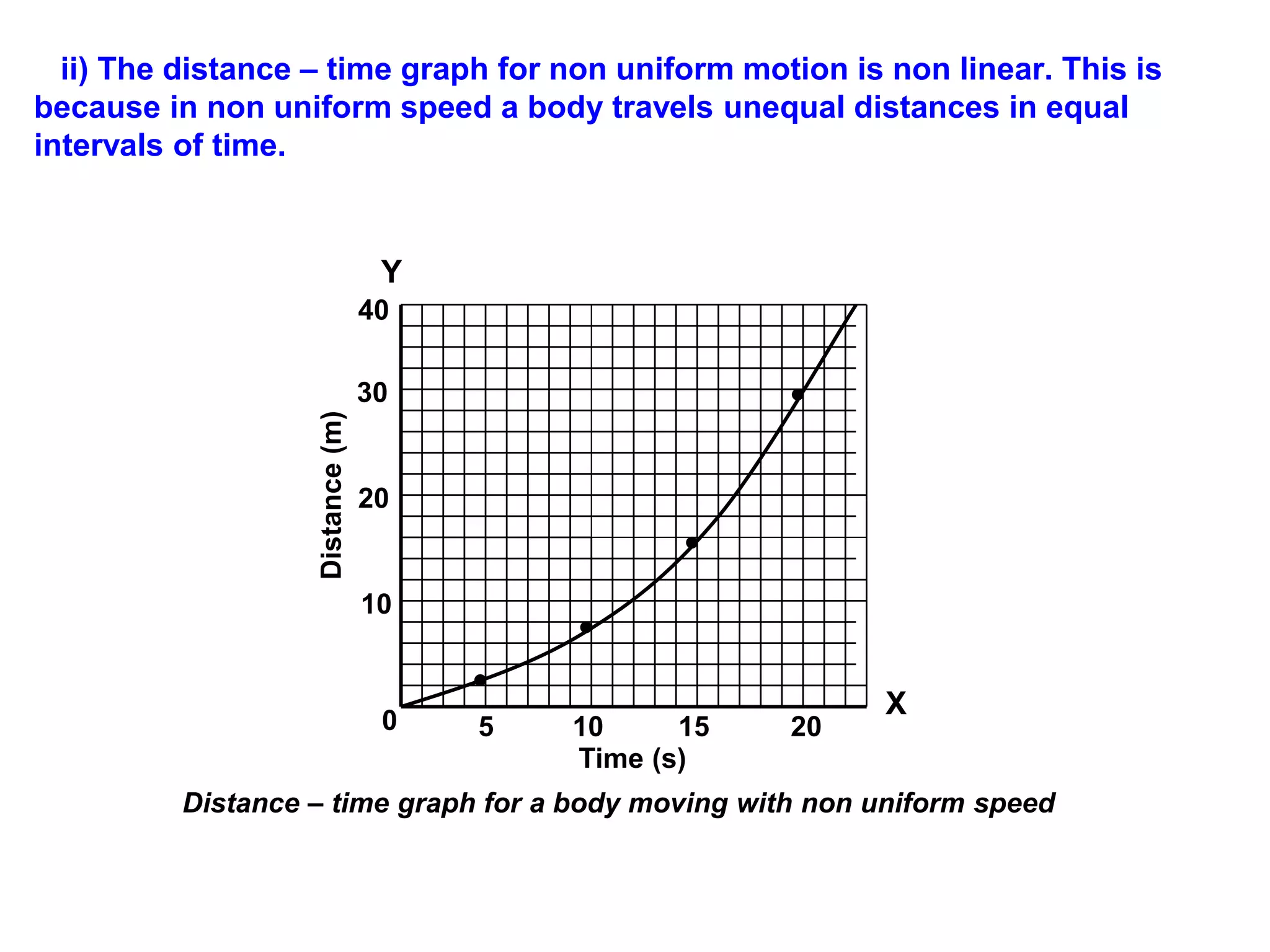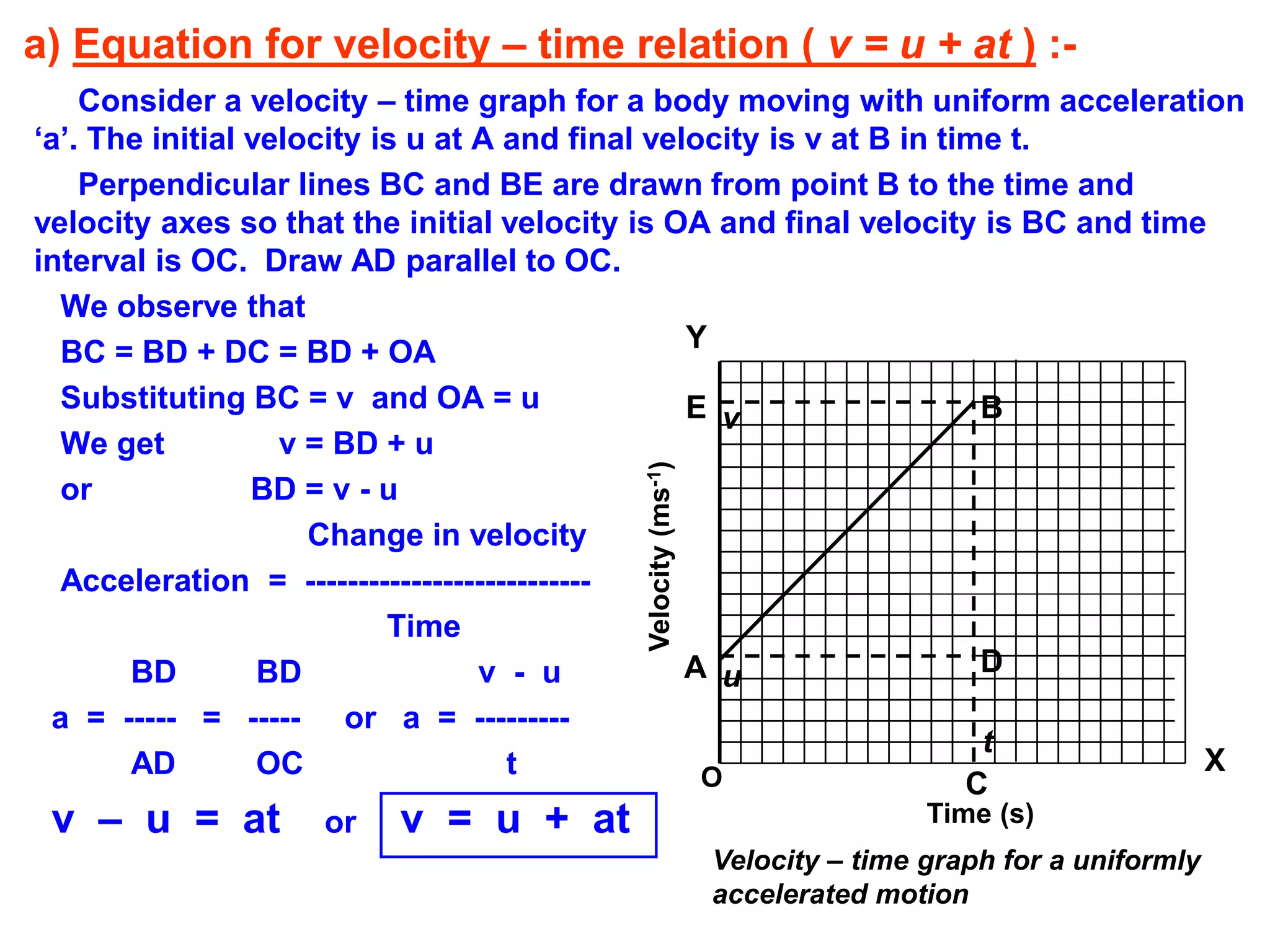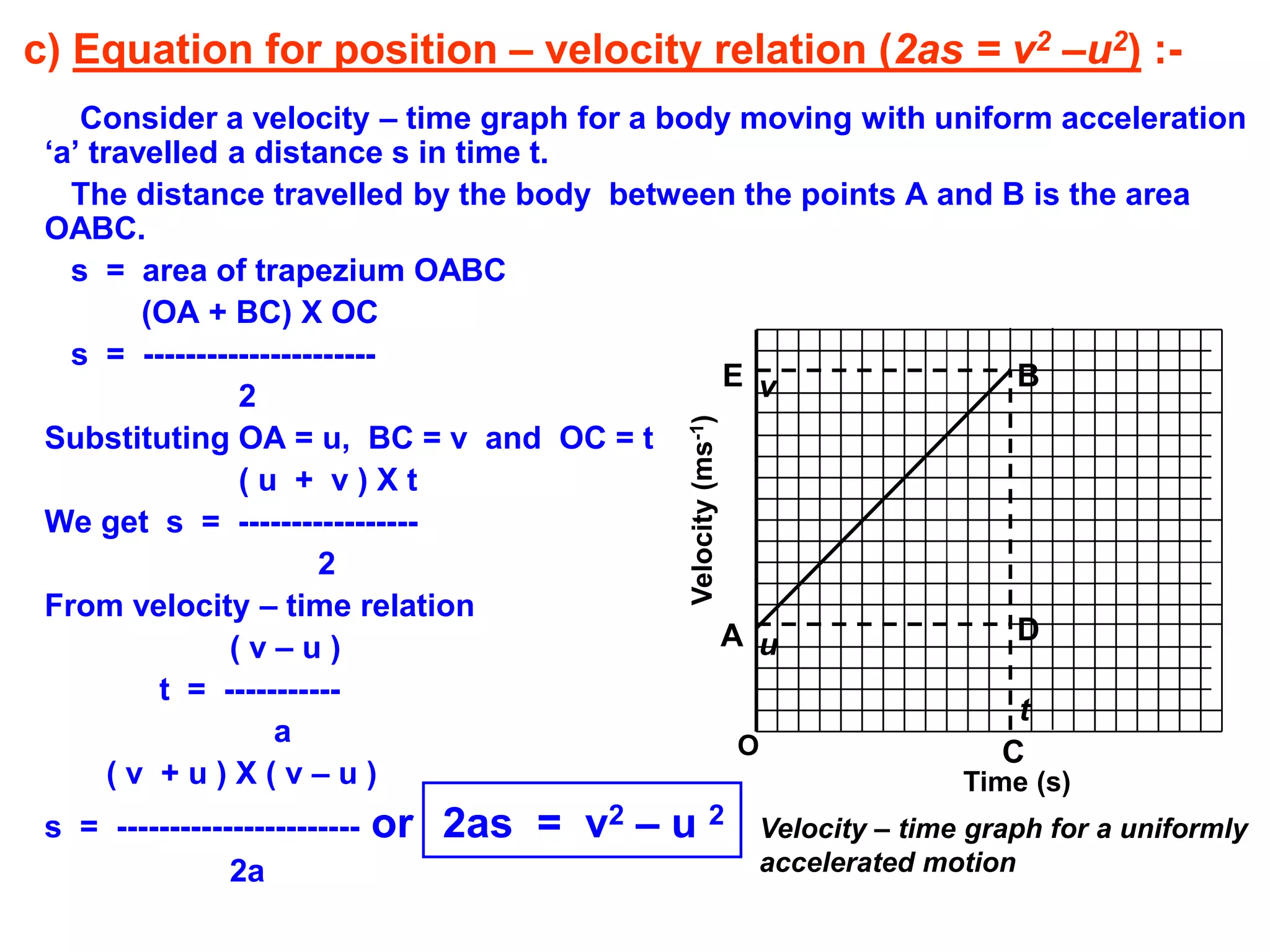This document describes motion and kinematics concepts for class 9 science. It defines key terms like displacement, distance, speed, velocity, uniform and non-uniform motion. It discusses representing motion graphically using distance-time and velocity-time graphs. The three equations of motion relating displacement, velocity, acceleration and time are derived from these graphs. Circular motion is also introduced.

